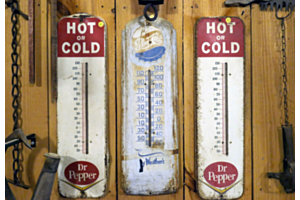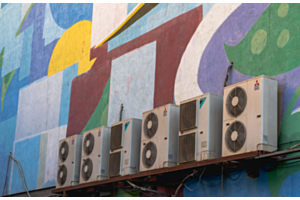Do Mini Splits Produce Carbon Monoxide?

Carbon monoxide is a colorless, tasteless, odorless gas that is almost impossible to detect without a meter. You’re thinking of upgrading your current heating and cooling solutions and buy a ductless mini split system. You’re concerned about the mini split giving off carbon monoxide, though.
In today’s post, we’ll discuss whether ductless mini splits produce carbon monoxide as well as whether your current heater/furnace or air conditioner does.
Do Mini Splits Produce Carbon Monoxide?
A ductless mini split system includes an outdoor compressor that’s connected to one or more indoor air-handling units. You select the temperature for each air-handling unit using an included thermometer.
The mini split pulls in warm air from your home. The refrigerant in the line reduces the temperature of the evaporator coils, which can then cool the air. The air that comes out is nice and cold.
To heat your home, a ductless mini split works as a heat pump. Rather than having a separate air conditioner and heater, a mini split can do both with one unit.
The mini split never uses oil or gas. Thus, there is no risk of carbon monoxide poisoning when you rely on a ductless mini split to heat or cool your home.
Do Traditional Heaters and Air Conditioners Produce Carbon Monoxide?
That information really has you interested in a ductless mini split system. For now though, all you have is traditional HVAC in your home, such as a furnace or air conditioner. Can these units release carbon monoxide into the air?
Your AC won’t, no. That unit runs on refrigerant much as a ductless mini split does. If your furnace or heater is an older model that burns fuel to create warmth, then indeed, the potential for carbon monoxide to spread within your house does exist.
We want to stress that carbon monoxide poisoning can be fatal. Considering you can’t see, smell, or taste the gas, you can breathe in carbon monoxide without even realizing it.
How to Prevent Carbon Monoxide Poisoning
We’re not telling you this information to scare you, but so you can be a well-informed homeowner. Here are some tips for safeguarding you and your family from carbon monoxide poisoning.
- Get a carbon monoxide detector: Carbon monoxide detectors save lives! However, if yours is battery-powered, then it’s only useful for as long as it works. Every six months, test the batteries and replace them as needed.
- Use a backup carbon monoxide detector: If your first carbon monoxide detector breaks, you don’t want to go without it for even one day. Buy two detectors so you always have a replacement ready if the situation calls for it. Keep spare batteries ready too.
- Upgrade your heating: As we established, older heaters and furnaces can potentially be a carbon monoxide risk. It’s better to be safe than sorry, especially with your life and the lives of your family at risk. A ductless mini split can heat and cool the house, and with no risk of carbon monoxide poisoning!
Sources:






